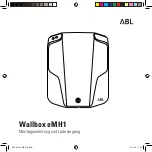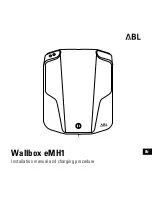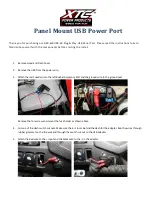
Infants and Small Children
There are different sizes and types of restraints for
children from newborn size to the child almost large
enough for the adult seat belt. Use the restraint that is
correct for your child:
•
Safety
experts
recommend
that
children
ride
rearward-facing in the vehicle until they are at least
one year old and weigh at least 20 lbs (9 kg). Two types
of child restraints can be used rearward-facing: infant
carriers and
9
convertible
9
child seats. Both types of
child restraints are held in the vehicle by the lap/
shoulder belt.
•
The infant carrier is only used rearward-facing in the
vehicle. It is recommended for children who weigh up
to about 20 lbs (9 kg).
9
Convertible
9
child seats can be
used either rearward-facing or forward-facing in the
vehicle. Convertible child seats often have a higher
weight limit in the rearward-facing direction than
infant carriers do, so they can be used rearward-facing
by children who weigh more than 20 lbs (9 kg) but are
less than one year old.
•
Rearward-facing child seats must NEVER be used in
the front seat of a vehicle with a front passenger airbag
unless the airbag is turned off. An airbag deployment
could cause severe injury or death to infants in this
position.
•
Children who weigh more than 20 lbs. (9 kg) and who
are older than one year can ride forward-facing in the
vehicle. Forward-facing child seats and convertible
child seats used in the forward-facing direction are for
children who weigh 20 to 40 lbs (9 to 18 kg) and who
are older than one year. These child seats are also held
in the vehicle by the lap/shoulder belt.
•
The belt-positioning booster seat is for children weigh-
ing more than 40 lbs (18 kg), but who are still too small
to fit the vehicle’s seat belts properly. If the child
cannot sit with knees bent over the vehicle’s seat
cushion while the child’s back is against the seat back,
they should use a belt-positioning-booster seat. The
child and booster seat are held in the vehicle by the
lap/shoulder belt. (Some booster seats are equipped
THINGS TO KNOW BEFORE STARTING YOUR VEHICLE
39
2
Summary of Contents for 2004 AN Dakota
Page 2: ......
Page 6: ......
Page 51: ...Multiple Child Restraint THINGS TO KNOW BEFORE STARTING YOUR VEHICLE 51 2...
Page 92: ......
Page 96: ...INSTRUMENTS AND CONTROLS 96 INSTRUMENT PANEL AND CONTROLS...
Page 97: ...FOUR GAUGE INSTRUMENT CLUSTER INSTRUMENT PANEL AND CONTROLS 97 4...
Page 98: ...SIX GAUGE INSTRUMENT CLUSTER 98 INSTRUMENT PANEL AND CONTROLS...
Page 139: ...Operation Tips Chart INSTRUMENT PANEL AND CONTROLS 139 4...
Page 221: ...ENGINE COMPARTMENT 3 7L V6 MAINTAINING YOUR VEHICLE 221 7...
Page 222: ...ENGINE COMPARTMENT 4 7L V 8 222 MAINTAINING YOUR VEHICLE...
Page 278: ......
Page 283: ...IF YOU NEED CONSUMER ASSISTANCE 283 9...
Page 286: ......
Page 287: ...INDEX 10...
















































